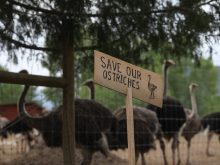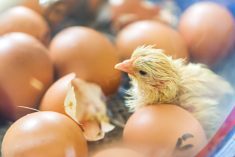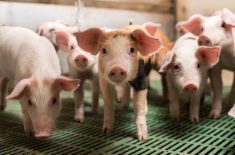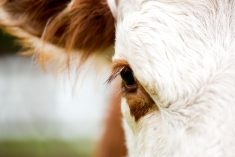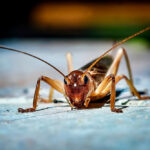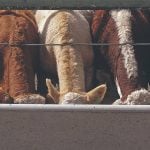The most widespread avian influenza outbreak in Canadian history is still affecting Alberta.
Three commercial poultry operations tested positive in late August and early September for the highly pathogenic H5N1 strain, bringing Alberta’s total to 35, according to an emergency task force set up by the province’s four poultry associations.
More cases are expected this fall as migratory birds head south, said Dr. Noel Ritson-Bennett, a veterinarian with the Canadian Food Inspection Agency.
Read Also

YEAR IN REVIEW: 2025 a year of weather extremes
Wildfires, drought and flash floods, oh my! Looking back at 2025’s headline-grabbing event in Canada and around the world.
“Alberta has definitely had the lion’s share relative to other provinces,” he said, noting nearly one million birds have died from the virus or been euthanized on affected Alberta properties.
[READ MORE] Avian flu hits Alberta, and the cost is already high
Alberta was particularly hard hit due to unique migratory bird patterns, said Ritson-Bennett, and poultry farm density is another factor. Wild birds spread the disease to commercial birds through droppings and secretions.
A total of 70 poultry properties (as of Sept. 7) have been affected by H5N1 in Western Canada. The total is 116 for all of Canada, resulting in the death of approximately two million birds. Of the 35 infected premises in Alberta, 22 were commercial poultry operations. Sixteen of the 35 have been released from quarantine.
“We are coming into the fall and are seeing more migratory bird movements, so there’s a chance we could see increased incidents here through the fall,” said Ritson-Bennett.
According to a Farmtario report, the current H5N1 strain is different from any strain the world has experienced. The North America H5N1 outbreak shows the virus is mutating and methods should be updated to prevent its spread.
“With climate change, we have a change in the biology of these wild birds, and they often arrive earlier on their northward journey and linger later during their southward return,” said Dr. Jean-Pierre Vaillancourt, a professor of avian medicine at the University of Montreal.
“Obviously, there seems to be a change in the biology of the vectors for the virus. If that happens here, we may be stuck with highly pathogenic AI year after year, on a cycle.”
If the H5N1 strain develops the ability to make people sick, it poses a major threat, said Vaillancourt. It has already spread to other species of birds as well as seals, skunks, mink and foxes.
“Once mammals start getting sick, you want to take it seriously,” he said.
The avian influenza strain detected this spring in Alberta was like the strain detected in Europe over the last two years, said Dr. Keith Lehman, Alberta’s chief provincial veterinarian. He is confident the virus came from migratory birds that comingled with European birds in the north last summer.

“There was some chance for comingling up there and our migratory birds ended up picking it up there and bringing it down the east coast and then it all went from there,” said Lehman. “It made its way down south. Then it was able to cross over into some of the flyways that come over into some of the more western parts of the continent.”
Ritson-Bennett said the current strain of H5N1 is also different because it isn’t contained to an isolated geographic area, such as B.C.’s Lower Mainland, which gets hit by H5N1 every three to four years.
“Since December 2021, we’ve seen outbreaks in every province with the exception of Prince Edward Island,” he said. “That itself is really quite different. And just the number – we are over 100 premises in Canada so it’s gone far beyond what we’ve seen in the past.”
In terms of changing the disease management strategy, Ritson-Bennett said the industry is doing a good job of communicating the need for biosecurity and prevention.
This year brought Alberta’s first avian influenza outbreak, said Karen Kirkwood, executive director of Alberta Chicken Producers, but the organization has been planning for the problem since the 2004 outbreak in B.C.
“It’s been good to see that all of the planning and the exercises that we’ve been doing in the industry over the years helped us to quickly mobilize,” she said. “And the working relationship we have with the Canadian Food Inspection Agency and our provincial government has been tremendous in helping us navigate this new experience.”
Is avian influenza here to stay?
“Unfortunately, there isn’t a highly effective and available vaccine for us to use from a preventive point of view,” said Lehman. “In terms of trying to prevent it, we are still forced to use biosecurity as our No. 1 way of trying to keep it out of our birds. We saw some farms that had really good biosecurity measures in place, and they still ended up getting infected.”



